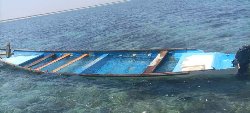ANZAC Centenary Ceremony, Cannock Chase, England
ANZAC Centenary Ceremony, Cannock Chase, England
Across the world, the finishing
touches are being made to commemorate the centenary of the
ANZAC landings at Gallipoli in Turkey during the Great War.
The Australian and New Zealand Army Corps followed up
initial landings by British and French troops, and landed at
Gallipoli on April 25th 1915. The ill-fated campaign failed
to knock Turkey out of the war, and the disastrous operation
cost the lives of thousands of men on both sides.
Several ANZAC ceremonies will be taking place in Britain. Many New Zealanders may not be aware that there are 73 New Zealand soldiers buried at the Commonwealth War Graves Commission cemetery at Cannock Chase in Staffordshire, England. Stories of these men and why they were here are being slowly uncovered by two members of local military historical research group The Chase Project, which has, after searching for seven years, recently tracked down the War Diaries of the 5th (Reserve) Battalion of the New Zealand Rifle Brigade relating to their time on Cannock Chase. With the help of Geoff McMillan, a contact in Wellington, Lee Dent and Richard Pursehouse of The Chase Project have been going through the War Diaries and learning of how the New Zealanders trained on Cannock Chase.
In 2007, The Chase Project re-discovered on Cannock Chase a terrain model of the Belgian town of Messines, constructed by the New Zealand Rifle Brigade in 1918 to train officers and NCOs in topography (map reading). The model was constructed in cement mortar and so much has survived that the whole area (the size of half a rugby field) was excavated by archaeologists in 2013. The town of Messines was captured by the New Zealand Division on 7 June 1917; it was the greatest triumph of the New Zealand Rifle Brigade during its brief existence.
One entry in the War Diary corroborated a story Lee and Richard had first come across in the local newspapers, about the “Spanish Flu” pandemic that swept across Europe in late 1918 and killed millions. The reference is particularly poignant for Geoff, who is travelling 11,627 miles (as the Kiwi flies) to the ANZAC centenary ceremony on Cannock Chase this year, as a relative buried here became a victim of the influenza outbreak.
The New Zealand troops moved to Cannock Chase in September 1917, and the very first ANZAC ceremony at Cannock Chase was – according to the War Diary – held in April 1918, which included sports and social events organised for the day. The Chronicles of the New Zealand Expeditionary Force described the event as the ‘third anniversary of the never-to-be-forgotten “Anzac day’”. When the New Zealand troops returned home in June 1919, people from nearby towns and villages took it upon themselves to ensure “The Fallen” would ‘never be forgotten’ in a simple ceremony the local newspaper explained was “to place flowers on the little mounds marking the last resting places.” The event has been upheld every year since, and has grown in complexity and size to be one of the largest ceremonies outside of Australia and New Zealand.
The page for the opening two weeks of November 1918 in the recently found War Diaries makes very sobering reading – the Adjutant had typed out the name and Army numbers of over forty New Zealand soldiers who had died - one of those named is Geoff McMillan’s Uncle Charlie.
This year Geoff McMillan, nephew of Rifleman 68982 Charles McMillan who is one of the 73 buried on Cannock Chase, has been asked by Dolores Ho to bring with him Dolores Crosses on his personally funded pilgrimage from New Zealand. Geoff’s request for assistance in the trip has been all but ignored by his New Zealand M.P (apparently an uncle is not a close enough relative to warrant help); despite this setback he is determined to visit his uncle’s grave for the centenary commemoration. He has also learnt that his application has been accepted for him to participate in the dawn ANZAC march to the Cenotaph in London on Saturday 25 April.
The first time anywhere in the world Dolores’ harakeke (flax) crosses, combined with a Returned Services Association poppy were placed on the graves of New Zealand troops was at Cannock Chase in 2008. Dolores, the Archivist at the National Army Museum in New Zealand has been patiently helping Lee and Richard in their research on the Messines terrain model on Cannock Chase. Dolores asked them to place the cross/poppies on the graves for the ANZAC ceremony in 2008. In 2011 Dolores made a personal trip to the cemetery to place her Crosses on the graves and was asked to place the Western Front Association wreath on the Cross of Sacrifice.
Since April 2008 the Dolores Cross Project has expanded from the initial “one off” on Cannock Chase to involve scores of volunteers (see www.dolorescrossproject.org) in honouring New Zealanders buried across the world.
Lee and Richard are members of the Wolverhampton Western Front Association, and suggested to the Chairman Alan Angel that Geoff could place the Western Front Association wreath at the Cannock ANZAC ceremony. Alan thought this was an excellent idea and Geoff – like Dolores in 2011 - has accepted the invitation to be included in the ceremony.
The ANZAC ceremony on Cannock Chase is organised - and funded - by Staffordshire Royal British Legion, with over 70 standard bearers with their R.B.L branch flags attending. The event will take place this year on Sunday 26 April (it has always been the nearest Sunday to the ‘correct’ date). Lee, Richard and Geoff will be placing the Dolores Crosses on the graves two days before the ceremony.
In January 2015, Lee and Richard went to Belgium to continue their research on the Messines terrain model they had re-discovered on Cannock Chase. While at Messines they placed a cross provided by Dolores Ho on the panel featuring Rifleman Green’s name (he has no known grave); Green was in the same Company as Sam Frickleton who was awarded the Victoria Cross for his actions in neutralising two machine gun positions near the town centre during the fighting in Messines. Rifleman Green had left Stafford, which is barely four miles from the Messines model for New Zealand before the war and volunteered for the New Zealand Rifle Brigade. He is also remembered on his local war memorial at Walton, near Stafford.
ENDS


 UN News: Ceasefire The Only Way To End Killing And Injuring Of Children In Gaza
UN News: Ceasefire The Only Way To End Killing And Injuring Of Children In Gaza ICHRP: US-Japan-Philippines Trilateral Summit Makes The Philippines A Battlefield For US-China Conflict
ICHRP: US-Japan-Philippines Trilateral Summit Makes The Philippines A Battlefield For US-China Conflict East West Center: Environmental Journalist Alexander Kaufman Receives East-West Center’s Inaugural Melvin M.S. Goo Writing Fellowship
East West Center: Environmental Journalist Alexander Kaufman Receives East-West Center’s Inaugural Melvin M.S. Goo Writing Fellowship Compassion in World Farming: Octopus Farm Must Be Stopped, Say Campaigners
Compassion in World Farming: Octopus Farm Must Be Stopped, Say Campaigners UN News: Shipwreck Tragedy Off Djibouti Coast, Drone Attacks Continue At Ukraine Nuclear Plant, Madagascar Cyclone Update
UN News: Shipwreck Tragedy Off Djibouti Coast, Drone Attacks Continue At Ukraine Nuclear Plant, Madagascar Cyclone Update UN News: Aid Lifeline Reaches Sudan's Darfur Region In Bid To Avert ‘Hunger Catastrophe’
UN News: Aid Lifeline Reaches Sudan's Darfur Region In Bid To Avert ‘Hunger Catastrophe’